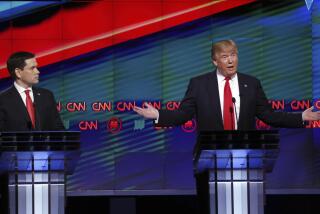India Tries to Break From the Past : Bold new policy is aimed at spurring economic development
- Share via
India’s first prime minister, Jawaharlal Nehru, justified his country’s centralized economy by declaring in 1958 that “the forces of a capitalist society, if left unchecked, tend to make the rich richer and the poor poorer.” Now, more than three decades later, India has chosen to extricate itself from socialist protectionism in favor of a more market-oriented economy.
In an unusually bold and unprecedented move, India’s new prime minister, P. V. Narasimha Rao, announced a revolutionary industrial policy last week designed to jump-start the flagging economy and aid the government in obtaining a multibillion-dollar loan from the International Monetary Fund.
In a reversal of policy, foreign investors will be more welcome in India--and many of the burdensome bureaucratic requirements governing the conduct of business will be lifted.
THE PLAN: Aiming to attract the flow of capital that has bypassed India in favor of other nations, the government lifted some of the restrictions imposed on foreign investors by the Foreign Exchange Regulation Act. A new rule increases the equity limit for foreigners to 51% and considerably augments the list of industries that are eligible for automatic licensing approval--industries such as heavy manufacturing and high technology. Some markets, such as India’s nascent and massive consumer products industry, will still be protected.
Domestic investors will benefit from changes made in the Monopolies and Restrictive Trade Practices Act, which required industrial entities to get government permission for investment, expansion or mergers.
This dramatic economic liberalization comes swiftly--only 34 days after Rao emerged as a compromise choice for prime minister following the most divisive and violent parliamentary elections in India’s 44-year history and a campaign that saw former Prime Minister Rajiv Gandhi assassinated.
Nehru, after helping lead India to independence in 1947, sought to keep the country self-sufficient after years of colonial rule. He instituted a nonaligned socialist administration and a highly centralized system of government. But that system, along with the country’s deeply entrenched poverty, has not allowed the Indian economy to share in the remarkable changes that have taken place in the global economy. As the economies of many Asian countries have boomed, India’s has continued to stagnate.
THE HITCH: In recent months, falling industrial production, declining growth, rising inflation and a $70-billion debt have become more pronounced, making clear the need for considerable structural reforms.
Change will not be easy. Civil servants, politicians and industrial groups have a considerable vested interest in maintaining the old system. But the world’s largest democracy must persevere, because the alternatives--economic collapse, religious and caste violence, and the disintegration of the union--are unimaginably worse than economic reform.
More to Read
Sign up for Essential California
The most important California stories and recommendations in your inbox every morning.
You may occasionally receive promotional content from the Los Angeles Times.













